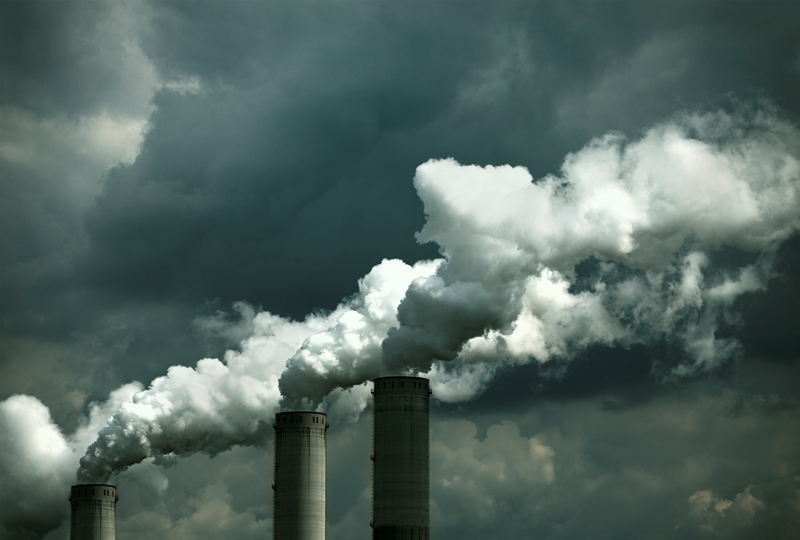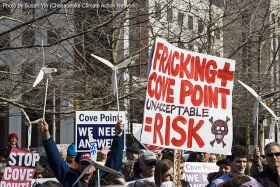This op-ed was originally printed by the Bay Journal on December 14, 2017. Reprinted with permission.
By: Rena Steinzor and David Flores
Despite research demonstrating that climate change is adding millions of pounds of nutrient pollution to the Chesapeake Bay, Maryland Gov. Larry Hogan and his Bay states colleagues appear to be taking a page from the Trump playbook: Ignore this inconvenient truth.
Doubts about whether climate change is caused by humans and threatens the planet are rapidly going the way of urban legend. Just ask any resident of Puerto Rico, the Gulf Coast or California how life was during the three consecutive hurricanes or the wildfires that have plagued them this summer and fall. Reliable scientific research shows climate change is also compounding pollution in the Chesapeake. Rainfall exacerbated by these dire developments could mean millions of additional pounds of nitrogen and significantly more phosphorus reaching the Bay every year that will put restoration out of reach by 2025.
2018 marks the crucial midpoint assessment that should ensure restoration remains on track, saving the Bay from dead zones and protecting 18 million watershed residents from increased flooding and toxic algae blooms. Yet regional regulators and political leaders recently decided to let themselves ignore climate-induced pollution during this crucial reassessment, kicking this heavy can down the road until 2025 or later.
On Dec. 5, a Bay Program goal team charged with evaluating and recommending policies to restore water quality met to finalize proposals for what states must include in final restoration plans that will guide their actions through 2025. Over the last year, the team had developed a proposal to adopt a “comprehensive, straight-forward approach” to pollution attributable to climate change that “demonstrates [the] Partnership’s commitment to [the] Chesapeake Bay Agreement Climate Resiliency Goal.” For most of the year, Maryland had championed climate action as the policy, and models were developed by this and other Bay Program groups. But, ignoring this promise, Chesapeake jurisdictions instead advanced a totally new proposal that would defer action to eliminate the pollution until after the 2025 deadline.
To make things worse, the proposal would at best only require action to eliminate the pollution levels attributable to 2025 conditions. We know from the Bay partnership’s own research that the impact of climate change on the Chesapeake will worsen substantially from 2025 to 2050 and beyond.
Ironically, computer modeling suggests the harmful pollution resulting from climate change may be significantly greater than Hogan’s favorite whipping boy for this problem — pollution from the Conowingo Dam. The dam is no longer able to trap pollution coming down the Susquehanna River and has resulted in the need to reduce additional nitrogen and phosphorus flowing to the Bay.
Hogan and his environmental secretary, Benjamin Grumbles, talk a good game on climate change, advertising Maryland as a state taking progressive steps to fight the problem. That makes it all the more discouraging that the state’s representatives ultimately went along with the proposal to postpone a reckoning with climate change when it was approved.
Hogan and Grumbles have a chance to make it right and live up to their words by showing leadership when Bay states meet next week to finalize this and other policies. Maryland’s position should carry extra weight because the governor chairs the Chesapeake Bay Executive Council. Maryland has more beautiful beaches, wetlands and fisheries than most other Bay states, and its political leaders must remain tireless advocates for a better and faster cleanup.
On Dec. 19, Secretary Grumbles will chair a meeting with his counterparts from other Bay states and federal agencies to make final decisions on how to address the remaining pollution reductions necessary to restore the Chesapeake, giving him and Hogan just a little more time to shift gears and again support action grounded in science and good policy. At the meeting, they should Bay states to commit to eliminating the additional nitrogen and phosphorus pollution and addressing all of the adverse impacts that result from changing climate.
Failing to meaningfully address climate change in the Bay cleanup not only abrogates the states’ commitment in the Bay Agreement but also undermines the U.S. Environmental Protection Agency’s commitment under the Bay pollution diet, or Total Maximum Daily Load — in writing, at least — to incorporate climate change into the midpoint assessment.
Maryland should be persuading Pennsylvania and other states to step up — on climate change and the Conowingo Dam. By signaling the lack of will and intent to address these pollution loads as soon as possible, Bay jurisdictions are ignoring what the experts know it will take to clean up the Bay. They are repudiating rigorous, peer-reviewed science and promoting a lighter — but no less significant — form of climate denialism, despite their approval of modeling that demonstrates the climate-related pollution rates; nor have they voiced any objections to its rigor.
Hogan and Grumbles can still do something to ensure the jurisdictions don’t effectively kill the Bay cleanup, but they need to act with haste, before it’s too late.
The views expressed by columnists do not necessarily reflect those of the Bay Journal. Click here to read the op-ed on the Bay Journal’s website.





